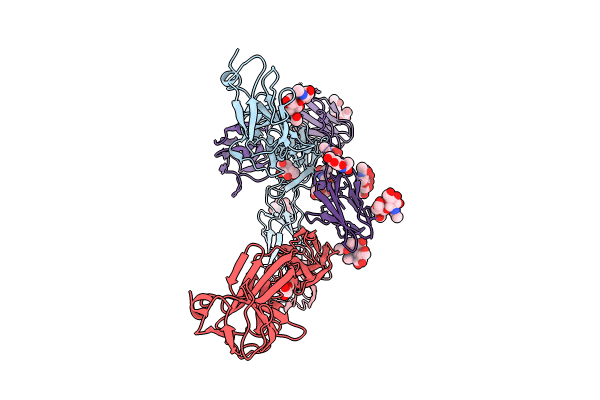
Deposition Date
2024-01-23
Release Date
2024-11-06
Last Version Date
2025-05-21
Entry Detail
PDB ID:
8VSE
Keywords:
Title:
Cryo-EM structure of human CD45 extracellular region in complex with adenoviral protein E3/49K
Biological Source:
Source Organism:
Homo sapiens (Taxon ID: 9606)
Human adenovirus 19a (Taxon ID: 88059)
Human adenovirus 19a (Taxon ID: 88059)
Host Organism:
Method Details:
Experimental Method:
Resolution:
3.80 Å
Aggregation State:
PARTICLE
Reconstruction Method:
SINGLE PARTICLE


